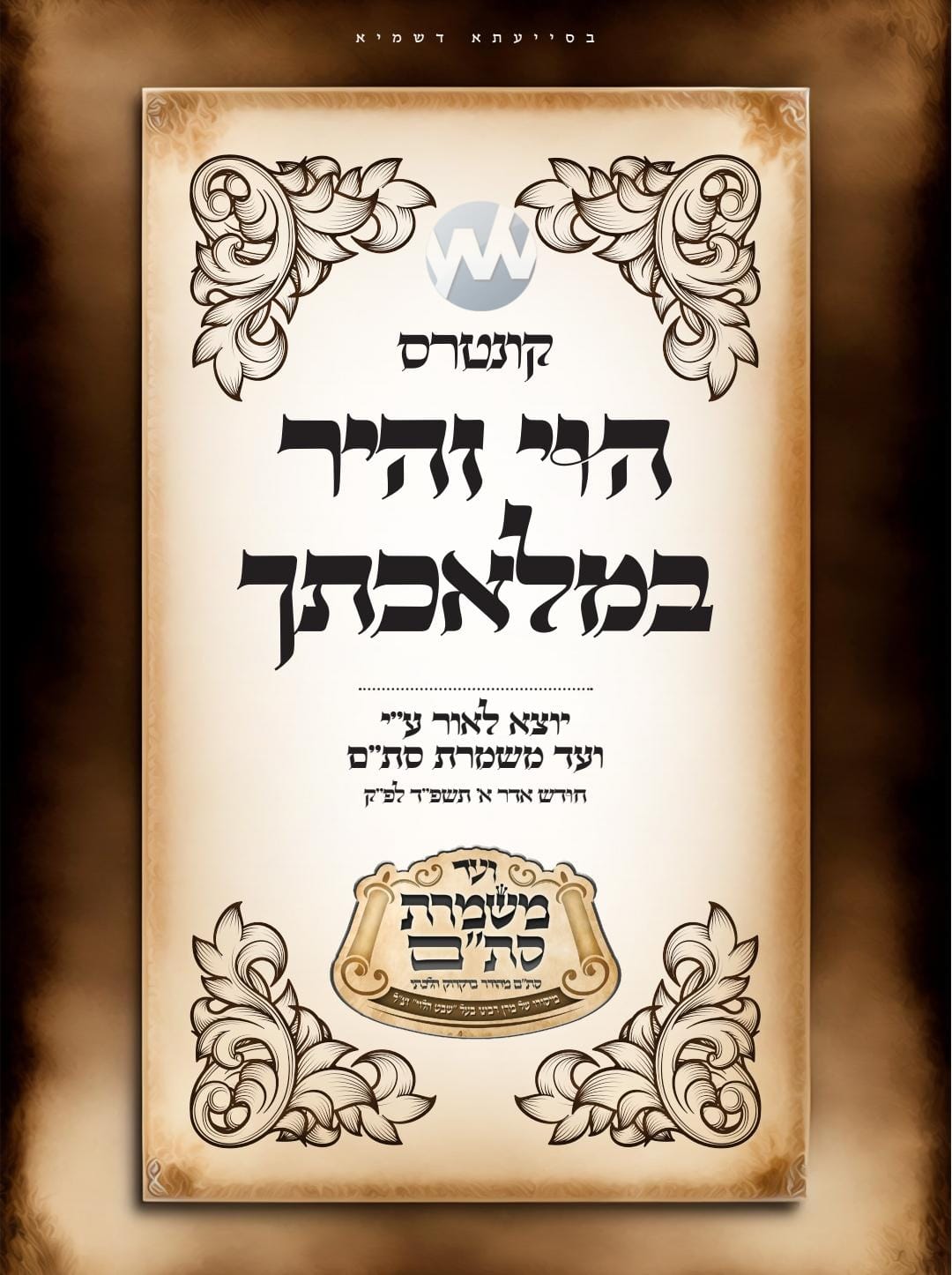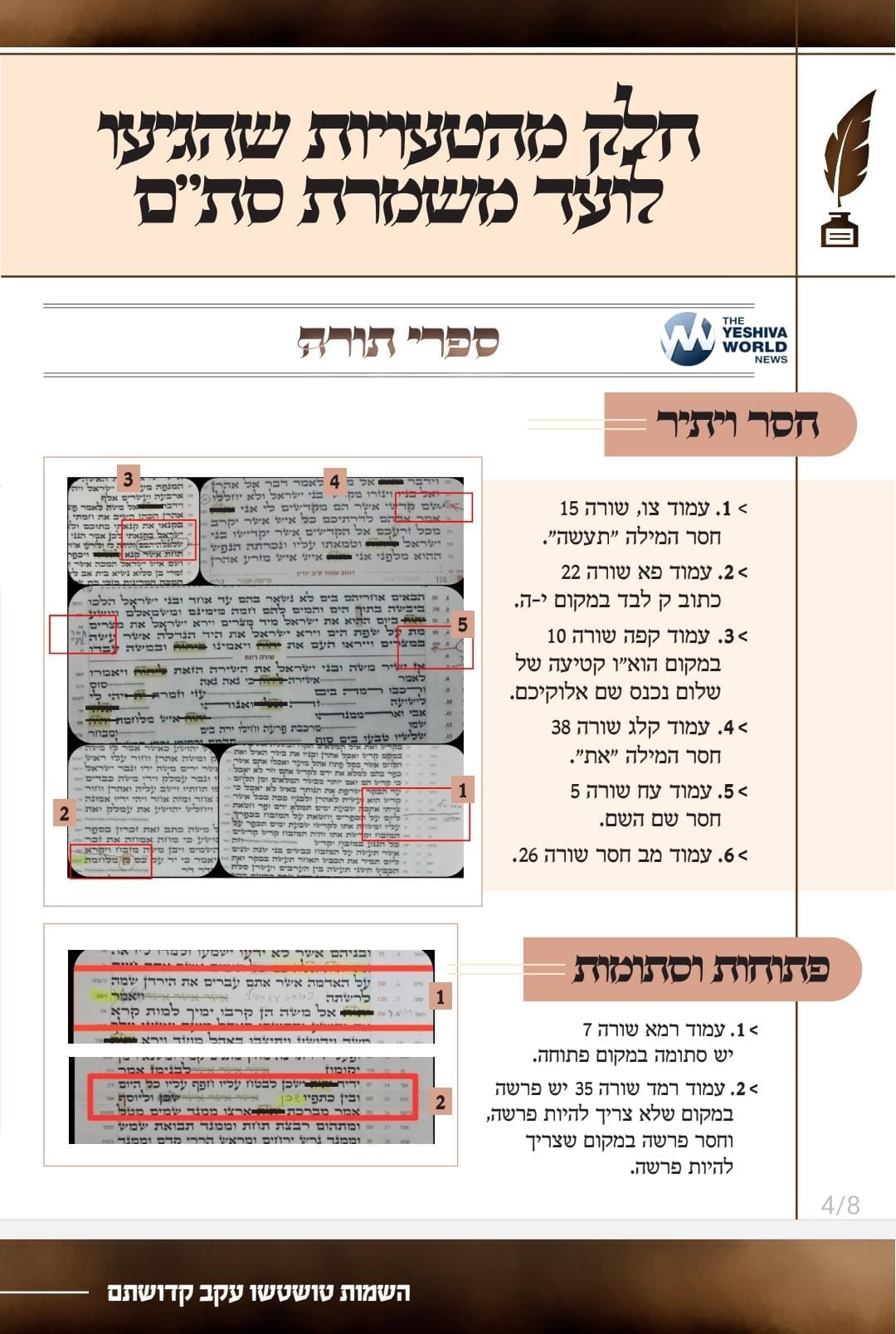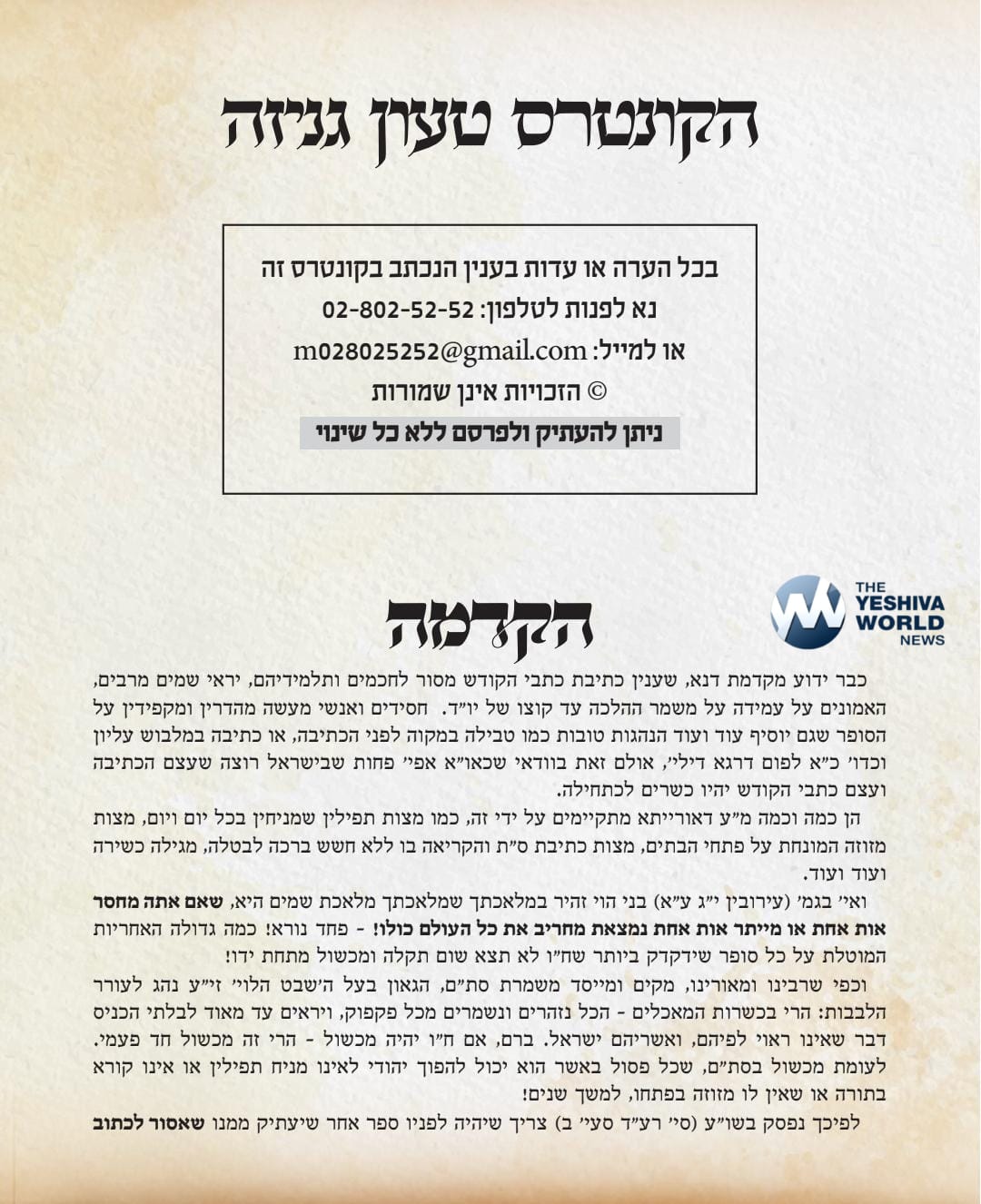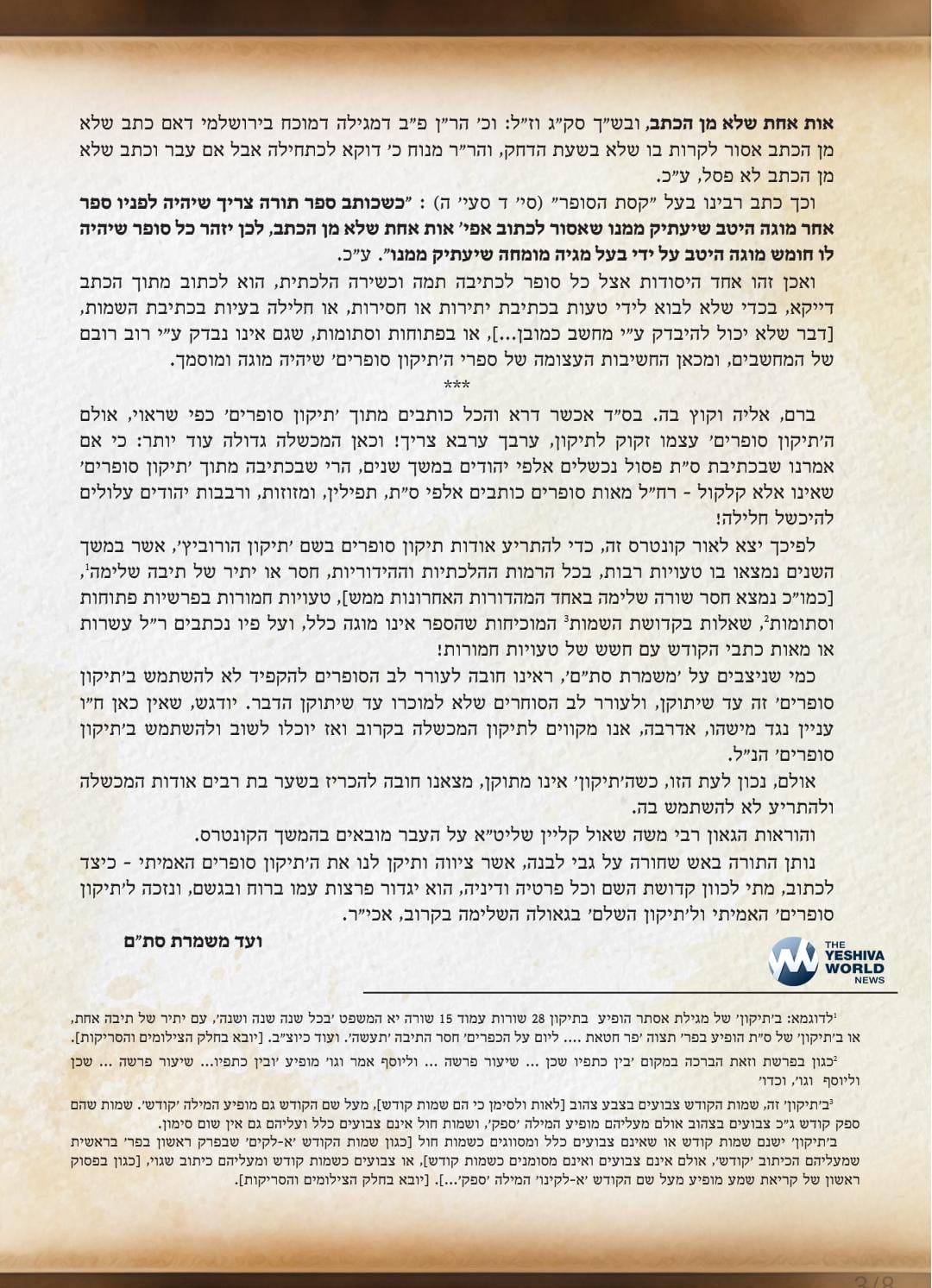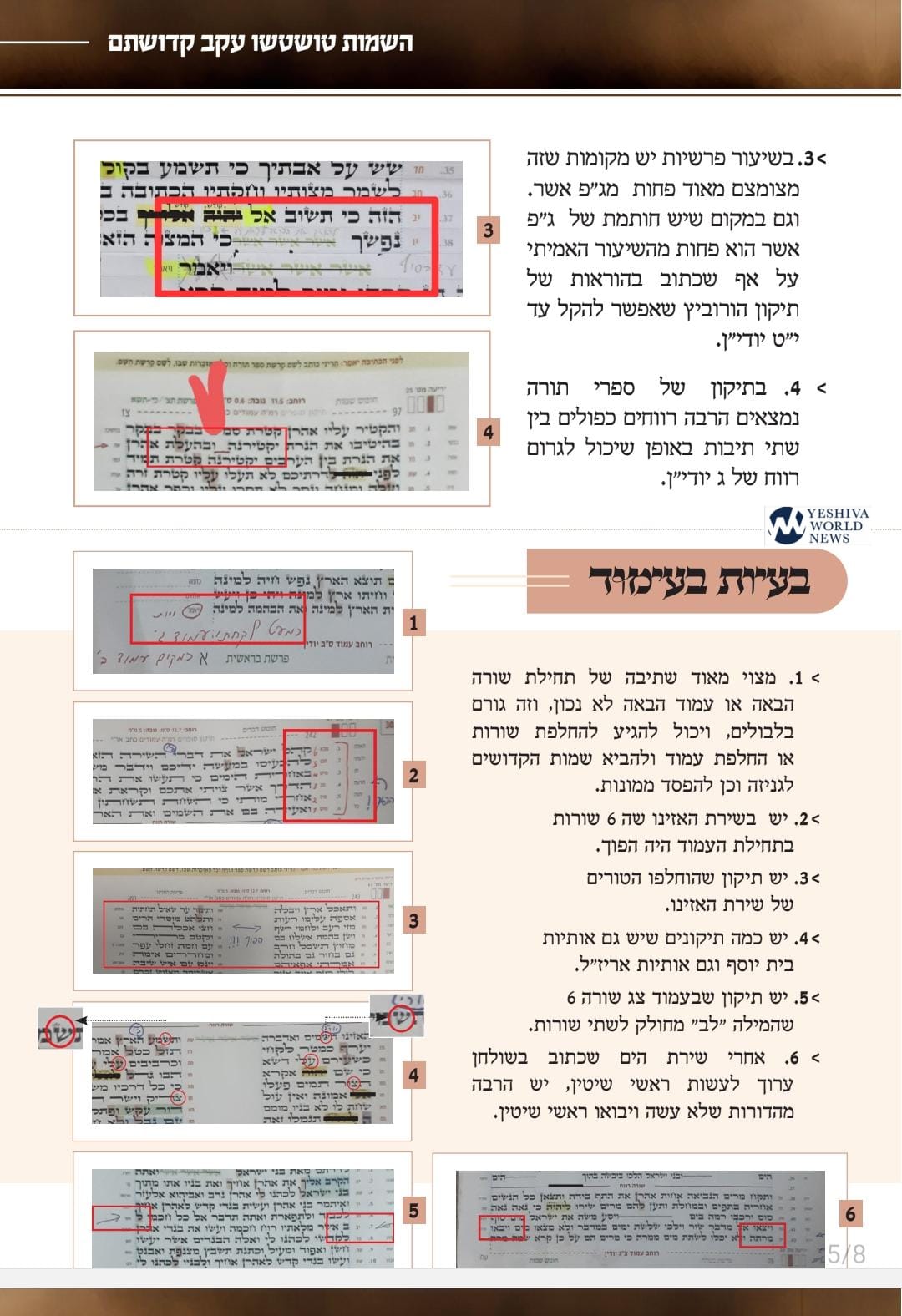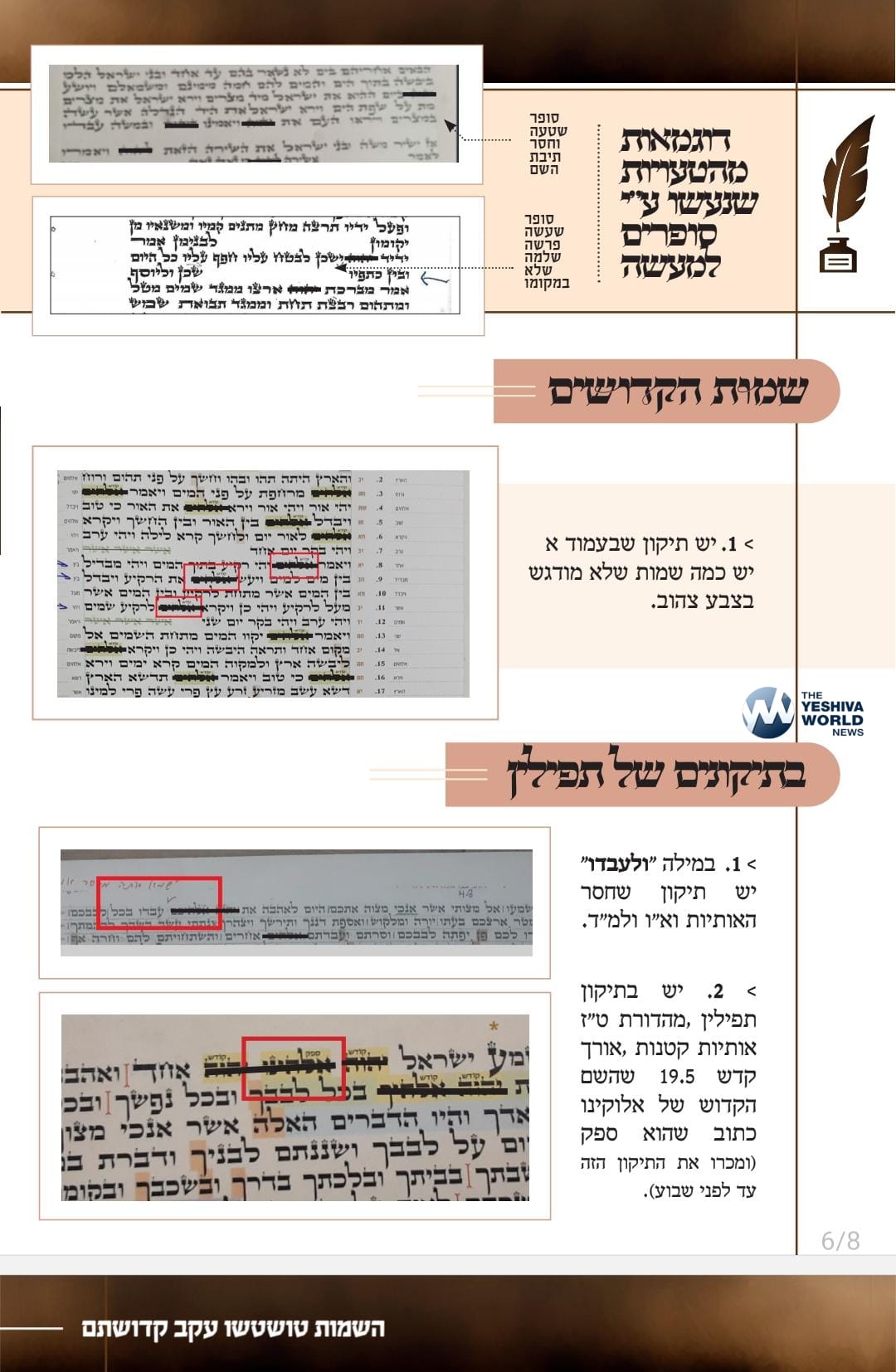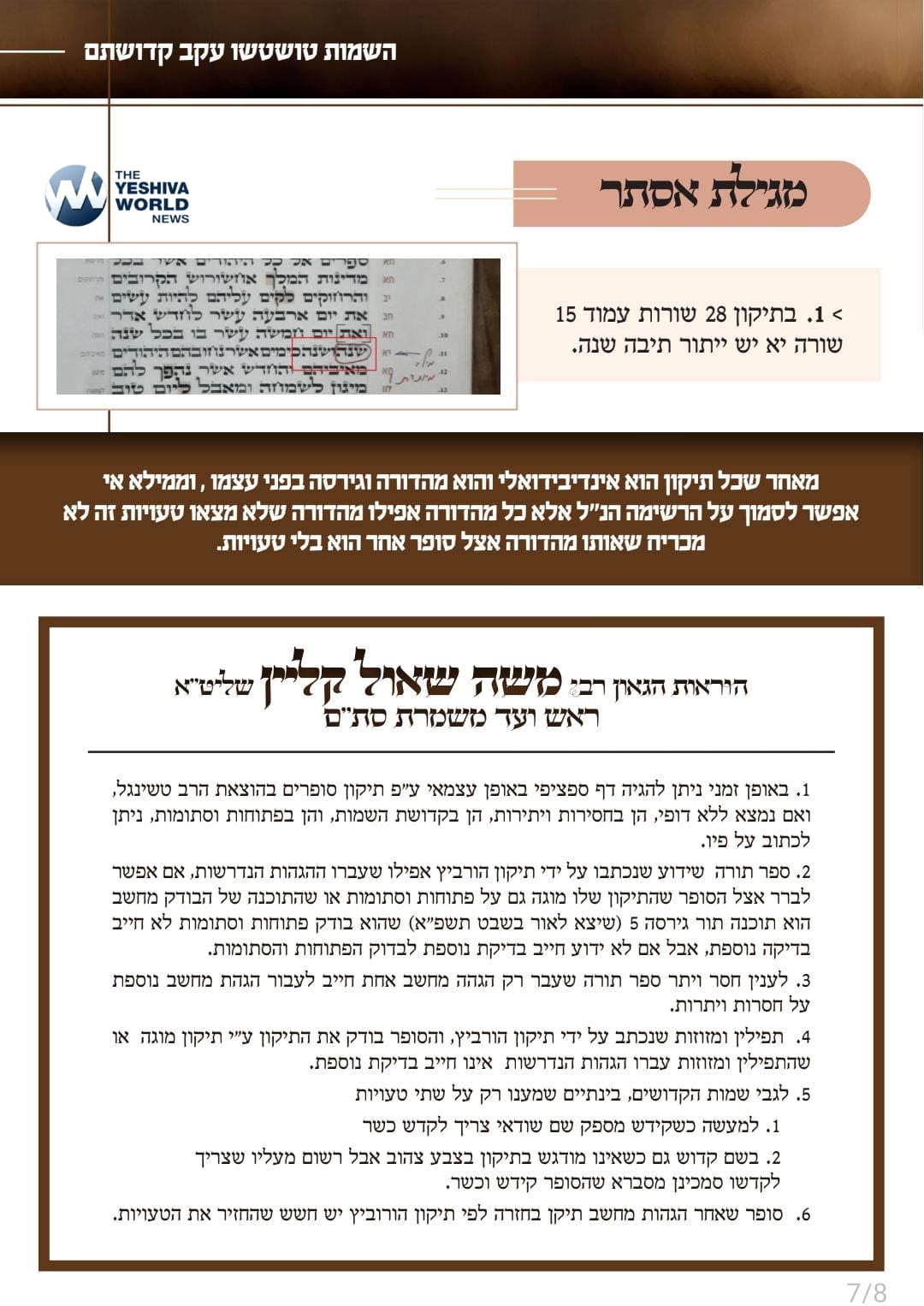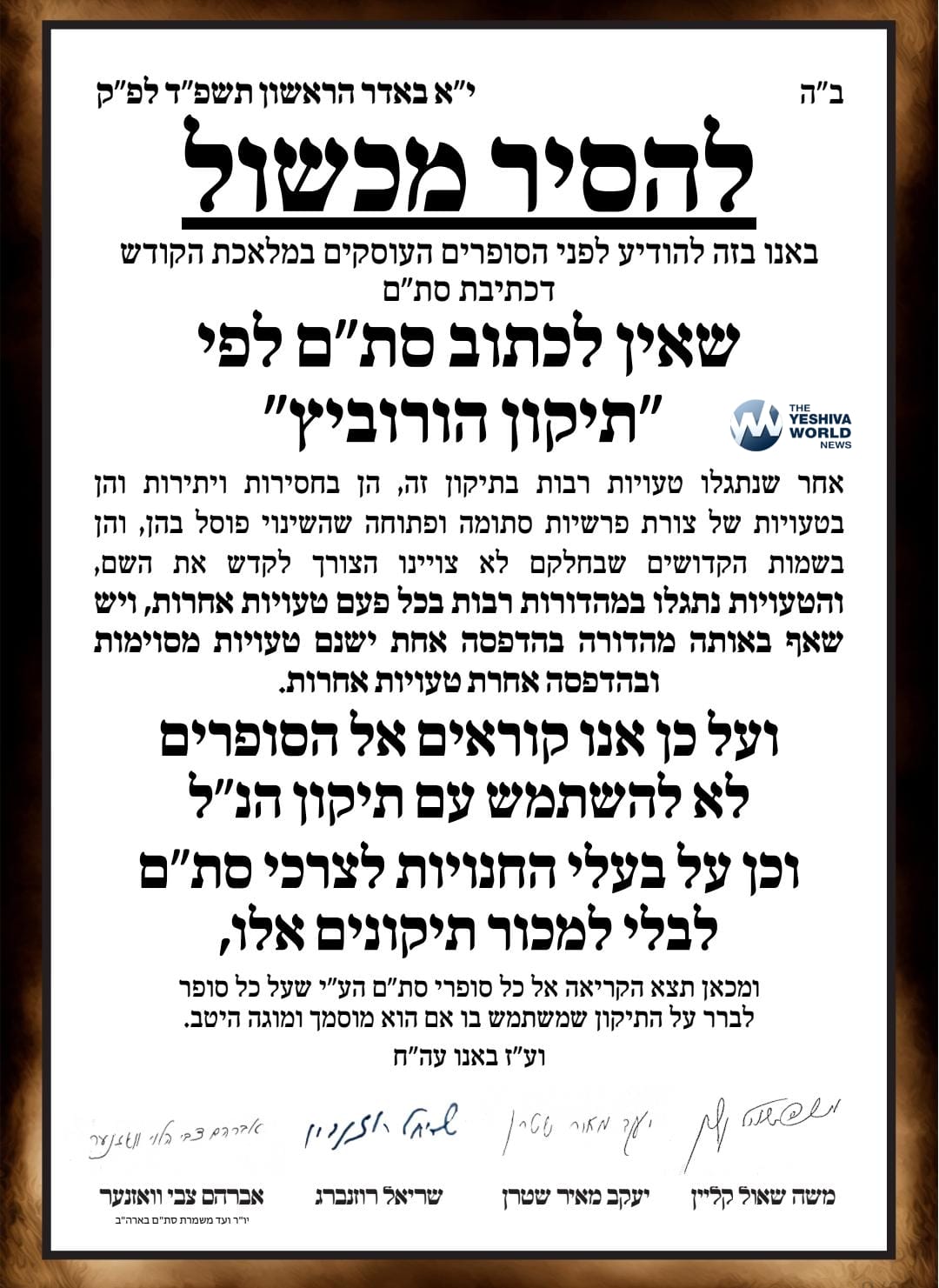By Rabbi Yair Hoffman
The question addressed in this article is whether or not that newly written Sefer Torah is actually kosher or not – even though it may even have gone through a computer check.
This article will also try to present the psakim issued thus far by the Gedolei HaPoskim. And thirdly, this article will give the three places to look for – to see if your sefer Torah is from the problematic ones. The three problems actually turn to five problems (there were more earlier) – because two of the problems cannot be seen by themselves (more on this later).
But let’s start at the beginning.
TIKUNS – THE TWO TYPES
When a child or grandchild turns 12, people go to the local Seforim store and purchase a $30 tikun so that the young child will have a text without nekudos – vowels from which to study for his Bar Mitzvah.
Sofrim, on the other hand, purchase highly scrutinized tikuns or have copies of very special ones. This is actually a halacha (see Keses HaSofer 4:5 and SA YD 274:2). These tikuns also recommend the best spacings in order to minimize stretched out letters and tightly written ones. They also tell the sofer which sections end with blank space for the rest of the line (called a pesucha); which sections have nine spaces and then another word (called a stumah). All other sections are just written straight. The tikuns also tell the sofer which are the names of Hashem that need to be sanctified when they are written.
THE H. TIKUN
Six years ago, a high-tech, highly researched tikun for sofrim was released (by a reliable sofer) which we will call the H. Tikun.” The H.Tikun was sold to Sofrim for roughly $250. The problem is that the H. Tikun was error-ridden because it was written and corrected on a computer and as type-setters often experience, a correction in one place can yield problems in another place.
The H. Tikun was a veritable best-seller in the Safrus market. It became so, however, only in the past three years. The first three years, not so many Sofrim had used it. The H. Tikun underwent a series of updates and tweaks for different formats. Each new edition, unfortunately, caused problems elsewhere. There were numerous editions of the H. Tikun released and each different edition has its own set of issues.
It must be realized and stressed that the sofer who wrote the H. Tikkun is an erlicha Jew who wished to help klal Yisroel. Unfortunately, it has created a number of problems.
THE FOUR ERRORS THAT INDICATE THE USE OF THE H. TIKUN
One can determine whether the sofer used the H. Tikun or not by looking in three areas. Each one of these errors would render that Torah pasul, until it is fixed, but also – one must be concerned about two other errors as well (found in Parshas Mishpatim). These are the three areas of discovery but there were a multitude of issues – these are three of the most common issues that can help identify them. There are many other issues depending upon which version of teh H. Tikkun was used:
- In Parshas Noach, (Bereishis 8:11) there should be a Pesucha there, and there is no Parsha there at all. It was written straight. Standard Torah 245 (some people have 3 extra – and the Yemenite has 280) with the vov on top of every amud – amudim Amud 10 – 42nd line
- In Parshas Vayelech (Dvarim 31:13) there should be a psucha there, but in the H. Tikun there is a stumah. Vayomer hashem is at the end of the line – it should have been a pesucha and then hashem starts the next line – which makes it, erroneously into a stumah.
- VeZos Habracha 33:12 normally should have – uvain ksaifov shachain. The next line should But in the H. Tikun it was bain ksaifov space, and then on the next line it states, shachain uleyosef amar. This creates an incorrect parsha.
- Under Az Yashir there is a minhag cited in the Keses Hasofer (Siman 16:1) that in the fifth line under the shira the full lines the fifth line should start with vayavo’u. In the H. Tikun it is found as the lat word on the fourth line. This is not a psul that renders it invalid, but it is a means to identify it.
THE TWO OTHER AREAS
If the Torah in question was written with an H. Tikun, then there are at leat two other very pressing issues in Parshas Mishpatim. There is a Name of Hashem called “Elokim” (spelled, of course, with a Hay instead of a Kuf). This spelling also has another meaning which is secular or chol. When a sofer writes the Shaim Hashem he must be mekadaish it – sanctify it – by reciting a special formula.
The H. Tikun erroneously identified two places where the word actually referred to judges or leaders and identified it as the Name of Hashem. These were in Shmos 21:6 where it states, “his master shall bring him to the judges (NOT TO HASHEM), and he shall bring him to the door or to the doorpost..” and also in the words, (Shmos 23:13) “other gods.”
The These two errors are not detectable, but if the H. Tikun was used, then there is a serious question as to how to rectify these errors. The TaZ in YD 246:2 rules that although the Ramah seems to be lenient, the implication is that it is only in that specific case, but in all others the Torah would require Genizah. At this point each shul that has such a Torah should ask their own Rav as to how to remediate the problem. There are two choices. A] Rewrite that yeriah B] Bring it to a reputable Sefardic sofer who can perform an intact peeling (if the parchment could maintain it).
HOW BIG IS THE PROBLEM?
The author of the H. Tikun reports that he has sold only some 3000 copies of it. However, it is possible that there are both “bootleg” copies of the H. Tikun as well as photocopies. Since an average sofer writes a sefer in six months, the number can range from 6000 to 12000 or more.
THE RULINGS
Rav Moshe Shaul Klein shlita has written six rulings thus far.
- For the time being, Sofrim should stop using the H. Tikkun and only use the previously used Tshingel Tikun.
- A Sefer Torah that was known to be written with an H. Tikkun, it should still be re-checked with a תורDuk 5.0 computer program (version Shvat 5781 or higher) for Psuchos and Stumos. If, however, it is not known to have been written with an H. Tikkun, then there is no need to check it further.
- Regarding a Torah that underwent a computer check for missing or extra letters or words only once – they should also undergo a second check. [YH: It seems that this is because even the תורDuk 5.0 computer program employs 1990’s OCR technology and will often miss the extra or missing letters.]
- Tefillin or Mezuzos that were written with the H. Tikun, and were checked again with a different tikun and underwent correct halachic fixes are fine and do not need to be re-checked.
- In terms of the Holy Names – we are only been aware thus far of two such errors. [YH: It could be that because of the use of Print on Demand technology there may be more to come].
- If a Magiah corrected [a different sofer’s Torah] using an H. Tikun, there is a concern that he fixed it up erroneously.
Stay tuned for part II which discusses the flaws of the current computer checking system.
The author can be reached at [email protected]
